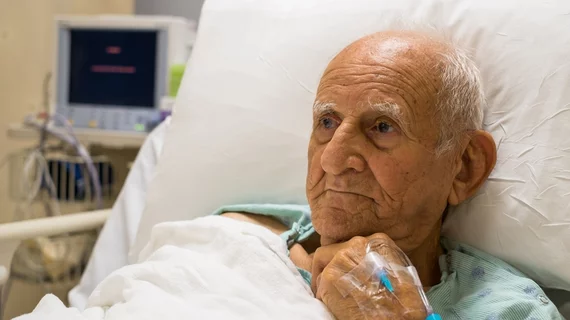Discharge against medical advice post PCI is ‘infrequent but deadly’
Percutaneous coronary intervention (PCI) patients who discharge against medical advice (DAMA) are twice as likely to be readmitted to the hospital, according to a new study published in JACC: Cardiovascular Interventions.
The researchers, led by Mamas A. Mamas, BMBCh, DPhil, of Keele University in Staffordshire, U.K., said though DAMA occurs in less than 1 percent of patients following PCI specifically, it is the strongest predictor of 30-day unplanned readmissions in myocardial infarction (MI) patients.
“[DAMA] refers to patients who leave the hospital before the treating physician’s recommendation for discharge,” Mamas and colleagues wrote. “It poses a problem for physicians treating hospitalized patients and has been noted to occur in 1 percent to 2 percent of all medical admissions. Some groups within the general population, such as those with mental health problems, are more likely to DAMA. Other factors that predict DAMA include self-financing healthcare, having Medicaid insurance and being young and male.”
The researchers examined the rates, trends and predictors of DAMA patients and evaluated the causes and rates of readmission for patients who DAMA.
The authors analyzed more than two million adult patients in the Nationwide Readmission Database (NRD), a publicly available database of all-payer hospital inpatient stays in the U.S. who underwent PCI between 2010 and 2014. The patients studied by researchers were either discharged against medical advice or physician-approved discharge.
Post analysis, the researchers found the proportion of DAMA patients was only 0.5 percent following PCI. The 30-day readmission rate for DAMA patients was almost 17 percent, compared with the 9 percent of patients who were discharged through a physician. Some notable findings were:
- Key predictors of DAMA included diagnosis of acute MI, acute kidney injury, smoking, drug abuse and alcohol misuse, among other factors.
- Both cardiac and noncardiac readmissions were similar for the DAMA group at almost 50 percent.
- DAMA was the strongest predictor for readmission.
- Acute MI was the most common cardiac-related reason for readmittance in both DAMA and physician-approved discharge patients—39 percent of DAMA patients were readmitted with an acute MI diagnosis while only 19 percent of physician-approved discharge patients were readmitted for the same reason.
- DAMA patients were more likely to have neuropsychiatric reasons for noncardiac causes of readmission—8.3 percent of DAMA patients were readmitted with neuropsychiatric conditions while only 2.4 percent of physician-approved discharge patients were readmitted for the same reason.
In an accompanying editorial, authors David Faxon, MD and Natalia Berry, MD, noted that improved communication with healthcare providers, better access to prescription medications following PCI and inpatient mental health support for patients with mental health disorders can help facilitate the reduction of DAMA.
Additionally, Faxon and Berry offered more concrete solutions to improving outcomes including improving access to care, shorter follow up times, follow-up through early office or home visits, and telemedicine.
The researchers noted their findings should promote further understanding of why patients DAMA following PCI to develop evidence-based interventions to reduce the occurrence as it is very harmful to the patient.
“We show that patients who DAMA are a high-risk cohort,” Mamas and colleagues wrote. “They have a two-fold increased risk of readmission and are twice as likely to be readmitted with the diagnosis code of acute MI and four times as likely to be readmitted with an acute neuropsychiatric episode. To the best of our knowledge, we show, for the first time, that DAMA is one of the strongest predictors of unplanned 30-day readmission after PCI.”

